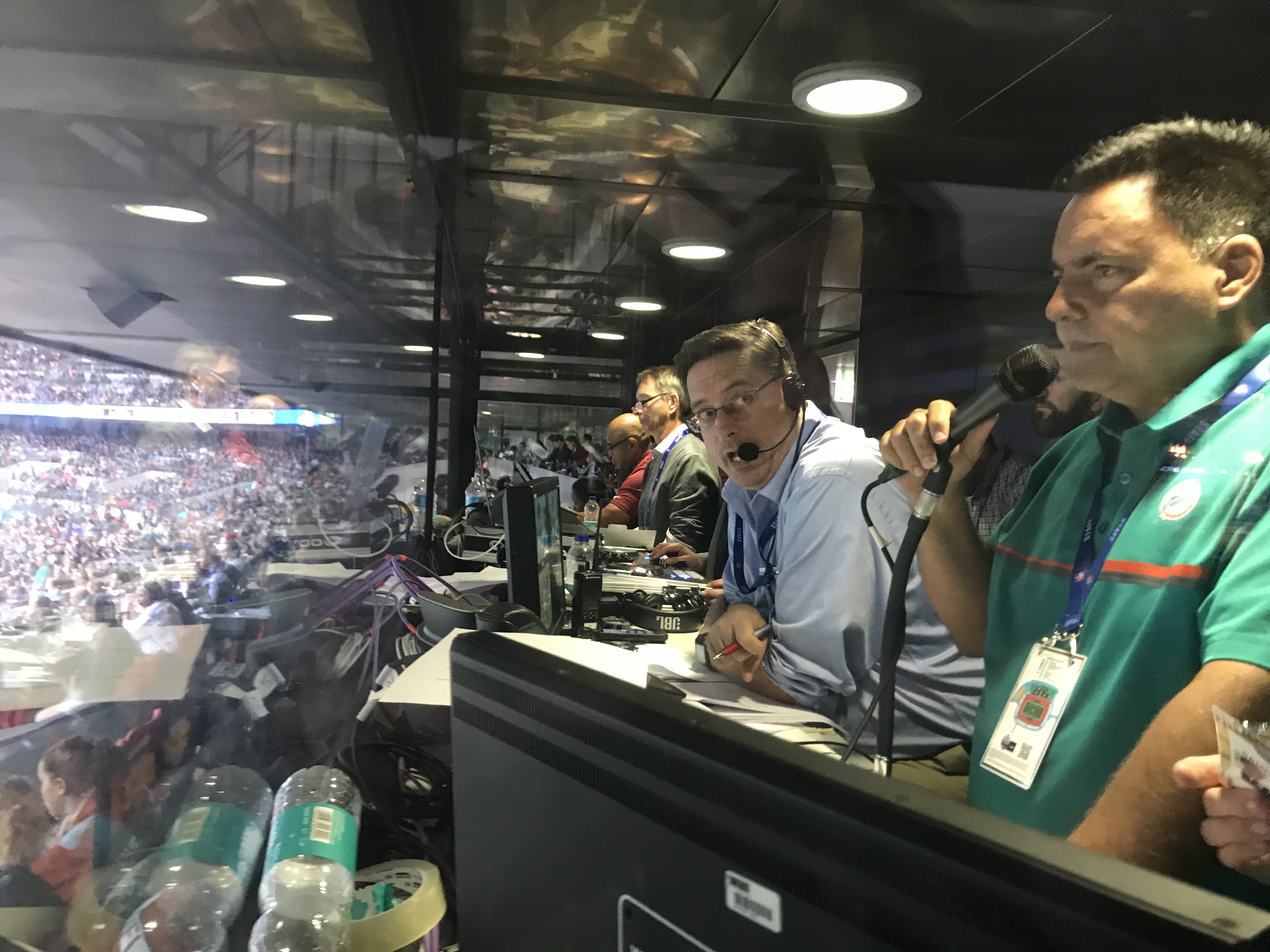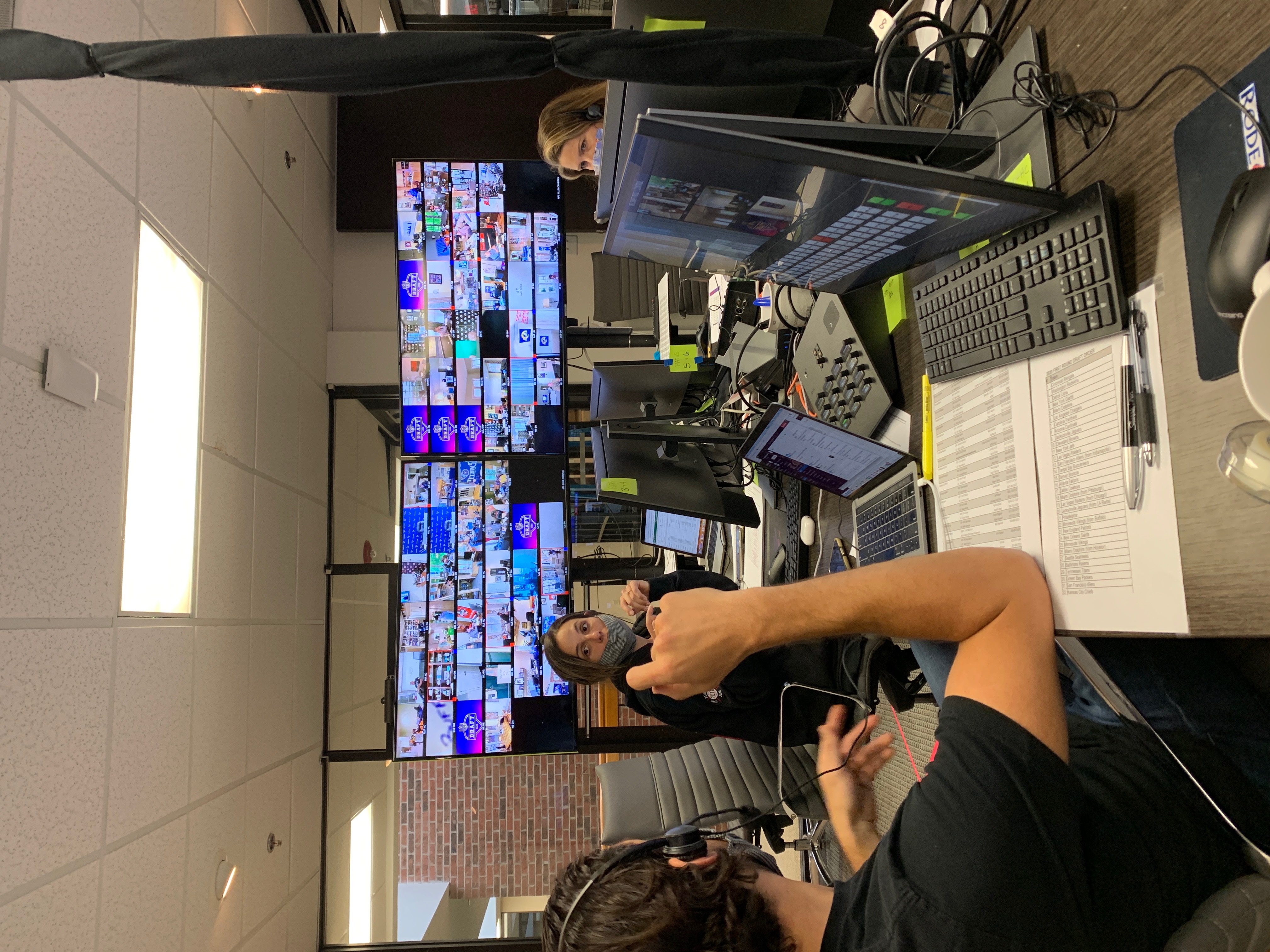Zoom Me Out to the Ball Game
Stadium and Arena AV Experts Deliver Creative Solutions During the Pandemic
The frenzy of a touchdown. The magic of the “wave” in a packed arena. The sounds and sights of sports stadiums are as integral to the fan experience as the games themselves. Would a World Cup goal be as compelling without the roar of the crowd, the jubilation of fans, or the sighs of the crestfallen?
COVID-19 has disrupted just about every aspect of life, and its impact on the sports world has been equally notable. Football, baseball, basketball, hockey, tennis—every team and league has its own opinions about fan attendance during the pandemic. Some teams are living in isolated “bubbles.” The Chicago Bears football team will begin the 2020 season without fans in the stands. Other NFL teams, like the Houston Texans, will allow fans in their stadium at a limited capacity, with new social distancing and safety measures in place. Most teams are keeping the matter open, with the possibility of visitors taking their seats at live games when it’s deemed appropriate.
Safety is still a paramount concern; more than 193,000 Americans have been lost to COVID-19 as of September 2020. But to help beloved sports leagues weather the financial fallout, the sports shows must go on. Technologists and broadcasters are turning to artificial crowd noise, virtual fan walls, remote attendees, interactive software, and creative audiovisual solutions to keep the athletes’ morale up and fan excitement high.
Bring in the Noise
Bob Becker, executive vice president of productions at Van Wagner, knows his way around a baseball diamond. The Van Wagner company has been connecting brands to sports for more than 20 years, offering a range of services across the sports landscape: TV-visible signage, stadium construction and development, collegiate multimedia rights, video production, and other key aspects of the sports industry.

The way Becker sees it, AV professionals who service sport facilities must remain flexible. The variables of the COVID-19 crisis are pausing certain projects while ramping up demand for others. “When basketball and hockey started again, it opened a new model in the game presentation world because games would be played with no fans in the stadiums,” Becker explained. “That had never been done before.”
Becker quickly realized that fan engagement—crowd noise, cheers, jeers, laughter, riotous applause—was critical to the game experience. Not only does crowd noise amp up suspense and enthusiasm, it is crucial for the athletes. “The NHL and NBA—and most leagues are picking up on this now—realized that there was a void for the players and the fans watching at home,” said Becker. “It’s one thing to play in an empty arena or an empty stadium and not see fans, but it’s different thing to not hear them at all, not to feel them—not feel the crowd’s energy.”
Interactivity is Key
There have been various technological advancements that enable virtual fan engagement and mixing the ambient noises of a venue with remote sounds. Some digital signage boards located in broadcast rooms or placed by the competition surface bring in window tiles of fans and their real-time reactions. This dynamic method helps the players feel connected to the fans. It helps the viewer at home, too, because of the vital real-time experience.
A daily selection of the top stories for AV integrators, resellers and consultants. Sign up below.
Security
With interactivity comes vulnerability, however … like the rampant “Zoom bombings” that upended school districts at the start of the COVID-19 pandemic. That’s why sports teams who use virtual crowd noise and interactive platforms are locking down security and, very often, using live moderators.
“There’s a moderator for the video side and there’s a moderator for the audio side of the experience to avoid any content you would not want seen on the screens or heard on the P.A. system,” Becker explained.
Optimizing Current AV
Arenas and stadiums across the country are evolving to promote social-distance guidelines and accommodate the mix of on-site and remote fans. Many venues are looking for new ways to optimize the core elements of their installed AV and game-presentation systems. “It’s not just audio but the graphics as well,” Becker said. “The ribbon boards are so important. If a player hits a home run, you better light up that stadium. A home run still needs flashing lights.”
Another creative challenge: How can systems originally designed for live fan engagement, such as the “kiss cam,” be adapted to meet the needs of today’s hybrid sports lovers?
Digital Signage
While some digital signage specialists have paused their stadium install projects, there are many venues currently specifying large-scale video boards and software solutions for 2021.
Becker is optimistic. “There are so many visionaries out there,” he said, “people who know that we are going to get to the other side of this [pandemic], and when we do, we want to be truly ready.”
Solutions, like Hypersign’s The Arena, are helping to bridge the gaps between soft-codec conferencing and broadcast. The Arena Fanwall consists of LED video walls positioned in the stands that broadcast life-size images of remote fans cheering and participating in the event. It offers integrated one-way broadcasts to streaming services including Akamai, Facebook Live, Twitch, YouTube Live, Ustream, and Wowza for on-network services.
Tighter Collaboration with Broadcasters
Sports AV specialists have long worked side by side with broadcasters and the networks, but the pandemic is requiring closer collaboration.
“Typically, game presentation and broadcast go their own separate ways and eventually meet up together for a few moments at game time,” Becher said. “But even then we’re doing our own things for the 80,000 people who are out in the stadium, and they’re doing their own thing for the millions who are watching from home. But now we have to work in tandem with each other and let them know, ‘When you come back from break, we’re going to have this graphic on the board,’ or ‘We’re going to have this headshot of this hockey player who just scored the goal.’”

This is why Becker’s sees AV becoming even more important to the broadcast experience. Pro AV is helping people at home feel like the game is one cohesive entertainment package. “That’s what we’re seeing now—much more cooperation between those entities,” he said.
Step Up, Vendors
The pandemic has introduced new chances for AV vendors to innovate by delivering higher-quality, broadcast-driven video platforms for the sports ecosystem.
“I would love to see a more robust broadcast package or quality,” Becker said. “We’re doing more and more virtual presentations. For instance, when we did the NFL draft, it was virtual. In this kind of broadcast, it is based on finding somebody on Zoom or another type of platform and putting them on the broadcast. We need to find ways to do things remotely at much higher quality. We have to be prepared to continue to provide the same level of entertainment to the fans whether they’re at home or—God willing—in the stadium.”
Going forward, games should be shot with the best quality cameras and transmitted with the highest quality transmit devices. Anything that would typically be done for a broadcast or an in-stadium show should now be done for people watching on computer screens, phones, or tablets.
There is no excuse for poor quality just because it’s virtual.
Silver Lining for Sports AV Specialists
Becker is proud of his colleagues in the pro AV industry because “we’re figuring out new ways to provide the same level of game presentation and excitement that we’ve always had.”
Still, he confessed, it’s been hard. There’s been a lot of convincing to do. But showing your resilience, ability to pivot, and creativity will help companies grow. “The men and women in this industry have really taken to it and are doing a great job,” said Becker.
AV integrators, vendors, and broadcasters are learning new ways to work in sync to re-conceptualize fan engagement.
Margot Douaihy, Ph.D., is a lecturer at Franklin Pierce University.

